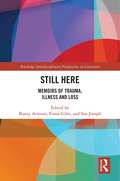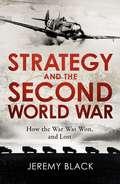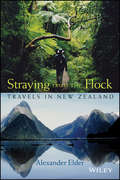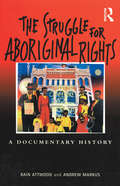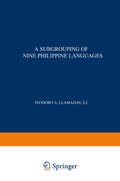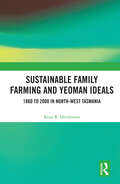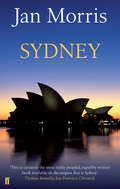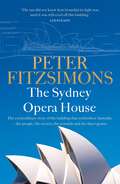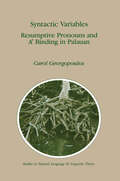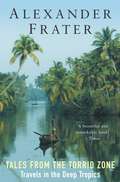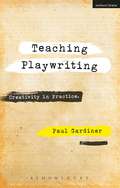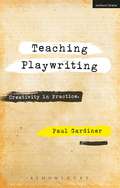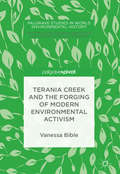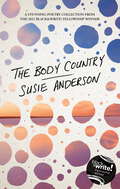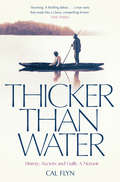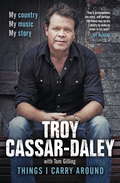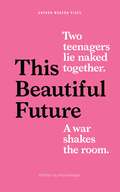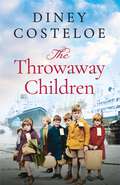- Table View
- List View
State Apologies to Indigenous Peoples: Law, Politics, Ethics (ISSN)
by Francesca DominelloThis book considers the ethics and politics of state apologies made to Indigenous peoples.The prevalent tendency to treat an apology as a speech act has maintained the focus on the state leader making the apology and not on the victims’ claims. This book demonstrates the inherent shortcomings of this approach through an examination of apologies delivered to Indigenous peoples in Australia and Canada. Contrasting the texts of these apologies with Indigenous peoples' responses, the book develops an understanding of apology as a relational process. This involves engaging indigenous peoples in dialogue, the aim of which would be to address past injuries by fulfilling the apology's transformative promise of 'never again' to indigenous peoples' satisfaction. The book concludes by examining more recent developments in Australia and Canada that highlight the contunuing need for government accountability to fulfil this promise and ensure indigenous people's rights and interests are upheld. This book will be of considerable interest to scholars and students in the fields of law and politics , Indigenous studies; forgiveness studies; transitional justice and reconciliation; settler colonialism and decolonisation.
Still Here: Memoirs of Trauma, Illness and Loss (Routledge Interdisciplinary Perspectives on Literature)
by Bunty Avieson Fiona Giles Sue JosephStill Here: Memoirs of Trauma, Illness and Loss explores the history, ethics, and cross-cultural range of memoirs focusing on illness, death, loss, displacement, and other experiences of trauma. From Walt Whitman’s Civil War diaries to kitchen table survivor-to-survivor storytelling following Hurricane Katrina, from social media posts from a refugee detention centre, to poetry by exiles fleeing war zones, the collection investigates trauma memoir writing as healing, as documentation of suffering and disability, and as political activism. Editors Bunty Avieson, Fiona Giles and Sue Joseph have brought together this scholarly collection as a sequel to their earlier Mediating Memory (Routledge 2018), providing a closer look at the specific concerns of trauma memoir, including conflict and intergenerational trauma; the therapeutic potential and risks of trauma life writing; its ethical challenges; and trauma memoir giving voice to minority experiences.
Still Here: Memoirs of Trauma, Illness and Loss (Routledge Interdisciplinary Perspectives on Literature)
by Bunty Avieson Fiona Giles Sue JosephStill Here: Memoirs of Trauma, Illness and Loss explores the history, ethics, and cross-cultural range of memoirs focusing on illness, death, loss, displacement, and other experiences of trauma. From Walt Whitman’s Civil War diaries to kitchen table survivor-to-survivor storytelling following Hurricane Katrina, from social media posts from a refugee detention centre, to poetry by exiles fleeing war zones, the collection investigates trauma memoir writing as healing, as documentation of suffering and disability, and as political activism. Editors Bunty Avieson, Fiona Giles and Sue Joseph have brought together this scholarly collection as a sequel to their earlier Mediating Memory (Routledge 2018), providing a closer look at the specific concerns of trauma memoir, including conflict and intergenerational trauma; the therapeutic potential and risks of trauma life writing; its ethical challenges; and trauma memoir giving voice to minority experiences.
Strategy and the Second World War: How the War was Won, and Lost
by Jeremy BlackA concise, accessible account of strategy and the Second World War. How the war was won . . . and lost..In 1941, the Second World War became global, when Nazi Germany attacked the Soviet Union; Japan attacked the United States at Pearl Harbor; and Germany declared war on the United States.In this timely book, which fills a real gap, Black engages with the strategic issues of the time - as they developed chronologically, and interacted - and relates these to subsequent debates about the choices made, revealing their continued political resonances.Beginning with Appeasement and the Soviet-German pact as key strategic means, Black examines the consequences of the fall of France for the strategies of all the powers. He shows how Allied strategy-making was more effective at the Anglo-American level than with the Soviet Union, not only for ideological and political reasons, but also because the Americans and British had a better grasp of the global dimension.He explores how German and Japanese strategies evolved as the war went badly for the Axis powers, and discusses the extent to which seeking to mould the post-war world informed Allied strategic choices from 1943 onwards, and the role these played in post-war politics, notably in the Cold War. Strategy was a crucial tool not only for conducting the war; it remains the key to understanding it today.
Straying from the Flock: Travels in New Zealand
by Alexander ElderAn illuminating road trip through the history, life, and attractions of one of the most beautiful countries in the southern hemisphere The beauty and grandeur of New Zealand has captured the imagination of movie-goers over the past couple of years, and the country is a dream destination for many around the world. Straying from the Flock is an intimate and personal account of one passionate traveler's visit to this incredible country, its mountains and beaches, fjords, rainforests, vineyards, and hidden eateries. Each of the fifty chapters describes one day in his travels-fishing, flying, cattle herding, befriending locals at every turn. Filled with colorful stories and memorable personalities, the book not only describes the trip of a lifetime, but captures a life-altering experience for its writer. From mountains and rainforests to cities and beaches, Straying from the Flock is both a moving memoir and personal travel guide to this amazing country.
Straying from the Flock: Travels in New Zealand
by Alexander ElderAn illuminating road trip through the history, life, and attractions of one of the most beautiful countries in the southern hemisphere The beauty and grandeur of New Zealand has captured the imagination of movie-goers over the past couple of years, and the country is a dream destination for many around the world. Straying from the Flock is an intimate and personal account of one passionate traveler's visit to this incredible country, its mountains and beaches, fjords, rainforests, vineyards, and hidden eateries. Each of the fifty chapters describes one day in his travels-fishing, flying, cattle herding, befriending locals at every turn. Filled with colorful stories and memorable personalities, the book not only describes the trip of a lifetime, but captures a life-altering experience for its writer. From mountains and rainforests to cities and beaches, Straying from the Flock is both a moving memoir and personal travel guide to this amazing country.
The Struggle for Aboriginal Rights: A documentary history
by Bain Attwood Andrew MarkusThe Struggle for Aboriginal Rights is the first book of its kind. Not only does it tell the history of the political struggle for Aboriginal rights in all parts of Australia; it does so almost entirely through a selection of historical documents created by the Aboriginal campaigners themselves, many of which have never been published. It presents Aboriginal perspectives of their dispossession and their long and continuing fight to overcome this. In charting the story of Aboriginal political activity from its beginnings on Flinders Island in the 1830s to the fight over native title today, this book aims to help Australians better understand both the continuities and the changes in Aboriginal politics over the last 150 years: in the leadership of the Aboriginal political struggle, the objectives of these campaigners for rights for Aborigines, their aspirations, the sources of their programmes for change, their methods of protest, and the outcomes of their protest. Through the words of Aboriginal activists, across 150 years, The Struggle for Aboriginal Rights charts the relationship between political involvement and Aboriginal identity.
The Struggle for Aboriginal Rights: A documentary history
The Struggle for Aboriginal Rights is the first book of its kind. Not only does it tell the history of the political struggle for Aboriginal rights in all parts of Australia; it does so almost entirely through a selection of historical documents created by the Aboriginal campaigners themselves, many of which have never been published. It presents Aboriginal perspectives of their dispossession and their long and continuing fight to overcome this. In charting the story of Aboriginal political activity from its beginnings on Flinders Island in the 1830s to the fight over native title today, this book aims to help Australians better understand both the continuities and the changes in Aboriginal politics over the last 150 years: in the leadership of the Aboriginal political struggle, the objectives of these campaigners for rights for Aborigines, their aspirations, the sources of their programmes for change, their methods of protest, and the outcomes of their protest. Through the words of Aboriginal activists, across 150 years, The Struggle for Aboriginal Rights charts the relationship between political involvement and Aboriginal identity.
A Subgrouping of Nine Philippine Languages
by NA LlamzonBY J. C. ANCEAUX Since the appearance of Brugmann's famous article on the relation ships of the Indo-European languages in 1884, the subject of sub grouping of languages as a methodological problem has been raised only occasionally. To this apparent lack of interest in a major point in comparative linguistics several causes can be assigned. One of them is that a consensus has been reached about the main outlines of the family-tree for the language-family which has received more attention than any other: the Indo-European. Another explanation is that for most of the branches of this family historical materials are available which have proved very valuable for the reconstruction of the inter mediate stages between the proto-Ianguage ande the modem languages. For a few branches only has the problem of subgrouping been a matter for discussion (e.g. Germanic). Special attention, however, could be expected from those who started to apply the comparative methods to other language-families. This attention did come forward, though not immediately, because linguists first had to deal with the problems of proving the existence of the family in question and deciding which languages belonged to it. For the Austronesian languages serious attemps to arrive at a lin guistic classification started relatively late. Certain cases of closer relationships were obvious enough to be recognized very early ( e.g.
Sustainable Family Farming and Yeoman Ideals: 1860 to 2000 in North-West Tasmania
by Rena R. HendersonWithin the frame of family farming, this book offers a longitudinal study of the Castra district in North-West Tasmania from first European settlement to the end of the twentieth century. It draws upon historical sources for yeomanry characteristics from Britain, Canada, the USA, New Zealand and Australian mainland colonies to show how these characteristics were persistently supportive of family farming. Surveying farming communities over several generations, this book explores a range of topics including colonial surveying practices, settler families’ motivation, attributes and demographics, the role of Methodism, the ways children were inculcated into yeoman farming enterprises, the role of women as companionate wives, and the political participation of farmers in the public sphere. The book also offers a new perspective of three commonly-held myths of settlement failure: the settlement of retired Anglo-Indian military and civil officers in the 1870s, the settlement of soldiers on small farms after the Great War, and the claims that the ideal of yeoman family farming was anachronistic to capitalist commodity production. The book draws from a wide selection of previously underused primary source materials, including oral histories from current and past residents, to provide a comprehensive overview of an important aspect of rural Australian history.The book is a valuable contribution to Australian historiography, and will be a useful resource for students and scholars of rural history, social history, environmental history, colonialism and sustainable agriculture.
Sustainable Family Farming and Yeoman Ideals: 1860 to 2000 in North-West Tasmania
by Rena R. HendersonWithin the frame of family farming, this book offers a longitudinal study of the Castra district in North-West Tasmania from first European settlement to the end of the twentieth century. It draws upon historical sources for yeomanry characteristics from Britain, Canada, the USA, New Zealand and Australian mainland colonies to show how these characteristics were persistently supportive of family farming. Surveying farming communities over several generations, this book explores a range of topics including colonial surveying practices, settler families’ motivation, attributes and demographics, the role of Methodism, the ways children were inculcated into yeoman farming enterprises, the role of women as companionate wives, and the political participation of farmers in the public sphere. The book also offers a new perspective of three commonly-held myths of settlement failure: the settlement of retired Anglo-Indian military and civil officers in the 1870s, the settlement of soldiers on small farms after the Great War, and the claims that the ideal of yeoman family farming was anachronistic to capitalist commodity production. The book draws from a wide selection of previously underused primary source materials, including oral histories from current and past residents, to provide a comprehensive overview of an important aspect of rural Australian history.The book is a valuable contribution to Australian historiography, and will be a useful resource for students and scholars of rural history, social history, environmental history, colonialism and sustainable agriculture.
Sydney
by Jan MorrisRenowned and much-loved travel writer Jan Morris turns her eye to Sydney: 'not the best of the cities the British Empire created ... but the most hyperbolic, the youngest at heart, the shiniest.' Sydney takes us on the city's journey from penal colony to world-class metropolis, as lively and charming as the city it describes. With characteristic exuberance and sparkling prose, Jan Morris guides us through the history, people and geography of a fascinating and colourful city. Jan Morris's collection of travel writing and reportage spans over five decades and includes such titles as Venice, Hong Kong, Spain, Manhattan '45, A Writer's World and the Pax Britannica Trilogy. Hav, her novel, was shortlisted for the Booker Prize and the Arthur C. Clarke Award. 'Sydney should be flattered. A great portrait painter has chosen it for her recent subject . . . Few writers - a handful of novelists apart - have got so far under the city's skin as Morris . . . Few Sydneysiders could match her knowledge of their city's history and its anecdotes' The Times 'The writing is, at times, like surfing: sentences rise like vast waves above which she rides, never overbalancing into gush . . . Jan Morris convincingly explains modern Sydney through its history' Observer
The Sydney Opera House
by Peter FitzSimonsIf only these walls and this land could talk . . . The Sydney Opera House is a breathtaking building, recognised around the world as a symbol of modern Australia. Along with the Taj Mahal and other World Heritage sites, it is celebrated for its architectural grandeur and the daring and innovation of its design. It showcases the incomparable talents involved in its conception, construction and performance history. But this stunning house on Bennelong Point also holds many secrets and scandals. In his gripping biography, Peter FitzSimons marvels at how this magnificent building came to be, details its enthralling history and reveals the dramatic stories and hidden secrets about the people whose lives have been affected, both negatively and positively, by its presence. He shares how a conservative 1950s state government had the incredible vision and courage to embark on this nation-defining structure; how an architect from Denmark and construction workers from Australia and abroad invented new techniques to bring it to completion; how ambition, betrayal, professional rivalry, sexual intrigue, murder, bullying and breakdowns are woven into its creation; and how it is now acknowledged as one of the wonders and masterpieces of human ingenuity.
Syntactic Variables: Resumptive Pronouns and A′ Binding in Palauan (Studies in Natural Language and Linguistic Theory #24)
by C. GeorgopoulosThis book represents the culmination of an extended period of field work on the Palauan language, carried out while I was a graduate student at the University of California at San Diego. The book was born as a short term paper written in 1982; from a forgettable infancy, that paper grew and grew, reaching the age of majority in my dissertation at the end of 1985. Some of its offspring have gone off on their own, as indepen dent papers, as course materials, or as thoughts that have not yet com pletely materialized. Some have been disowned. The full adulthood of this study of Palauan is realized in the present book. Virtually every section of the dissertation has been rewritten, updated, or otherwise (I hope) improved. Where the dissertation was still struggling with various problems, the book has found solutions. The aim of the book remains, however, to give broad coverage of Palauan, with emphasis on A' binding, rather than to focus narrowly on a few highly specific theoretical issues. I hope to have achieved a balance between presenting the language clearly and nonprejudicially, and deal ing with various of its properties in current theoretical terms. If I have, the book should prove to be a resource for further typological study of the phenomena it describes.
Tales from the Torrid Zone: Travels in the Deep Tropics (Vintage Departures Ser.)
by Alexander FraterPart memoir, part travelogue, Tales From the Torrid Zone is rooted in Alex Frater's birthplace, the tiny tropical republic of Vanuatu where his father ran its hospital and his mother, in her front garden, built its first school. From this obscure South Seas group he ranges over the hot, wet, beautiful swathe of the world that has haunted him ever since – dines with a tropical queen in a leper colony, makes his way across tropical Africa (and two civil wars) in a forty-four-year-old flying boat, delivers a new church bell to a remote Oceanian island and visits scores of countries to learn about their history, politics, medicine, flora and fauna (including the remarkable role of the coconut in tropical life). But, as becomes plain, the torrid zone is not just a geographical phenomenon, it’s also a state of mind. The result is a witty, entertaining and immensely readable book from a fine storyteller.
Teaching Playwriting: Creativity in Practice
by Paul GardinerPlaywriting is a skill under-explored in the classroom, despite the strong evidence that it's an engaging and rewarding activity for young people. Teaching Playwriting addresses this gap and is an essential resource for teachers wanting to gain the skills and confidence necessary to introduce playwriting to their students. Based on rich research and clearly explained theoretical concepts, the book explores the lessons from creativity theory that will provide the teacher with the skills and knowledge necessary to empower students' writing and creativity. It also includes extensive practical activities and writing exercises to develop students' playwriting proficiency and creative capacity.Discussing key concepts in playwriting such as idea, dialogue, character, action and structure, the book enables teachers to respond to the unique learning needs of their students and help them tell their stories and reach their potential as young playwrights.
Teaching Playwriting: Creativity in Practice
by Paul GardinerPlaywriting is a skill under-explored in the classroom, despite the strong evidence that it's an engaging and rewarding activity for young people. Teaching Playwriting addresses this gap and is an essential resource for teachers wanting to gain the skills and confidence necessary to introduce playwriting to their students. Based on rich research and clearly explained theoretical concepts, the book explores the lessons from creativity theory that will provide the teacher with the skills and knowledge necessary to empower students' writing and creativity. It also includes extensive practical activities and writing exercises to develop students' playwriting proficiency and creative capacity.Discussing key concepts in playwriting such as idea, dialogue, character, action and structure, the book enables teachers to respond to the unique learning needs of their students and help them tell their stories and reach their potential as young playwrights.
Terania Creek and the Forging of Modern Environmental Activism (Palgrave Studies in World Environmental History)
by Vanessa BibleThis book tells the story of Terania Creek – the world’s first direct action blockade in defence of a forest, occurring in Australia in 1979. Contrary to claims that the Australian counterculture was a mere imitation of overseas models, the Australian movement, coalescing with a home-grown environment movement, came of age at Terania Creek. After five years of ‘polite’ campaigning failed to stop the logging of ancient Gondwanan rainforest, an organic and spontaneous blockade erupted that would see the forging of a number of ingenious blockading techniques and strategies. The activist repertoire developed at Terania Creek has since echoed across the country, and across the Earth. This book draws on extensive oral history interviews as well as photographs taken of the protest in 1979; such rich source material brings the story to life. Terania Creek and the Forging of Modern Environmental Activism will therefore appeal to both a scholarly audience as well as activists, practitioners, and counterculturalists.
the body country
by Susie Anderson'I keep looking at the stars to see the universe, but the joke is I am the universe.' the body country is an evocative exploration of a world that too often marginalises and the power of a land that can offer connection. A meditation of wandering and wondering on Country, inviting the reader to understand the complexities and changing forms of self and love.A Wergaia and Wemba Wemba woman, Susie Anderson captures profound meaning in moments often lost in the busyness of a day, encouraging us all to stop and allow ourselves the space to notice. To notice the shape of a mouth as it says goodbye; the colour of the sky as you fall in love; the way a steering wheel is turned carelessly after many wines; the crunch of dry ground after drought; the smell of fire on the wind; the movement of ants before rain; the power a word, a dress, a piece of art can give to run towards something new. These are poems that take us across rural and urban settings; from the personal to the universal, from looking inward to mapping the land and always bringing us back to the Country that connects us all.'Anderson pays attention to the moments that slip through the cracks and hands them straight to you in a way that can momentarily stun' Harper's Bazaar'The Body Country is an evocative exploration of a world that too often marginalises and the power of a land that can offer connection. Susie captures profound meaning in moments often lost in the busyness of a day, encouraging us all to stop and allow ourselves the space to notice' Wimmera Mail Times
Theatre and Australia (Theatre And)
by Julian MeyrickHow has Australia developed, culturally? What is the relationship between European theatre and Aboriginal performance? How do the concepts of memory, space, and love intersect and inform all Australian drama?Theatre and Australia is a stark look at the signal contradictions that make up the nation's sense of self. Exploring how race, gender, and community have influenced Australia's cultural development, this book reveals the history of Australian theatre as a tussle with questions of identity that can neither be entirely repudiated nor fully resolved.This concise study traverses the narrative of Australian theatre since white settlement, examining some of the main plays and performances of the last 230 years, and illuminating the relationship between European, non-Indigenous, and First Nations drama.
Theatre and Australia (Theatre And)
by Julian MeyrickHow has Australia developed, culturally? What is the relationship between European theatre and Aboriginal performance? How do the concepts of memory, space, and love intersect and inform all Australian drama?Theatre and Australia is a stark look at the signal contradictions that make up the nation's sense of self. Exploring how race, gender, and community have influenced Australia's cultural development, this book reveals the history of Australian theatre as a tussle with questions of identity that can neither be entirely repudiated nor fully resolved.This concise study traverses the narrative of Australian theatre since white settlement, examining some of the main plays and performances of the last 230 years, and illuminating the relationship between European, non-Indigenous, and First Nations drama.
Thicker Than Water: History, Secrets And Guilt: A Memoir
by Cal FlynCal Flyn was very proud when she discovered that her ancestor, Angus McMillan, had been a pioneer of colonial Australia. However, when she dug deeper, she began to question her pride. McMillan had not only cut tracks through the bush, but played a dark role in Australia's bloody history.
Things I Carry Around: The bestselling memoir from the ARIA Award-winning country music star
by Tom Gilling Troy Cassar-DaleyA born storyteller, Troy Cassar-Daley has at last turned his talent to sharing his own inspiring life.‘Troy’s achievements are many, and perhaps the finest may be his ability to make us listen to his heart.’ Joy McKeanFor the first time, Troy talks about his early life - how his parent’s divorce changed things for him, about missing his Dad and growing up in Grafton surrounded by the warmth and love of his mother, Irene, his Nan and Pop and his extended Indigenous family. A larrikin at heart, Troy includes all the highs and lows on his path to stardom: the thrill of performing on stage at the Tamworth Music Festival with Jimmy Little when he was just 15; the excitement of heading off on tour with Brian Young and then discovering just how lonely life on the road could be; his first record deal; playing with the greats – Johnny Cash, Willie Nelson, Merle Haggard and Slim Dusty; his first album Beyond the Dancing, which blended his indigenous heritage with his rural background; meeting the woman who would steal his heart; recording in Nashville; and, finally, releasing True Believer, the album that really launched his career. The multiple Golden Guitar, APRA, ARIA and Deadlys winner also lets us in on some of the life lessons he learned the hard way, lessons that kept this prodigiously talented Aussie on the straight and narrow (most of the time). Things I Carry Around, is the warm, genuine, and inspiring story of a young indigenous Australian who had a dream and turned that dream into reality. ‘Troy’s a true gentleman, warm and genuine, always a pleasure to be around. He sings straight from his heart and straight from the heart of his country.’ Paul Kelly
This Beautiful Future (Oberon Modern Plays)
by Rita KalnejaisElodie is 17. She’s French. She lets down her hair and puts it up again. She finds reflective surfaces everywhere. She tests new looks. Otto is 15. He’s a German soldier. He brushes his hair to make the shape of his head more perfectly oval. He tries not to look at himself in the mirror. It’s 1944. Elodie and Otto are experiencing love for the very first time. Outside, the world around them is exploding. Inside, the room shakes. Elodie and Otto’s bodies touch. Fusing youth with old age, the past with the present, pop tunes with Stalingrad, This Beautiful Future is about love in the extreme.
The Throwaway Children
by Diney CosteloeGritty, heartrending and unputdownable – the story of two sisters sent first to an English, then an Australian orphanage in the aftermath of World War II. Rita and Rosie Stevens are only nine and five years old when their widowed mother marries a violent bully called Jimmy Randall and has a baby boy by him. Under pressure from her new husband, she is persuaded to send the girls to an orphanage – not knowing that the papers she has signed will entitle them to do what they like with the children. And it is not long before the powers that be decide to send a consignment of orphans to their sister institution in Australia. Among them – without their family's consent or knowledge – are Rita and Rosie, the throwaway children. What readers are saying about THE THROWAWAY CHILDREN: 'I haven't felt so immersed in a book in a very long time and have recommended to just about everyone' 'Heart wrenching' 'A truly powerful book'

